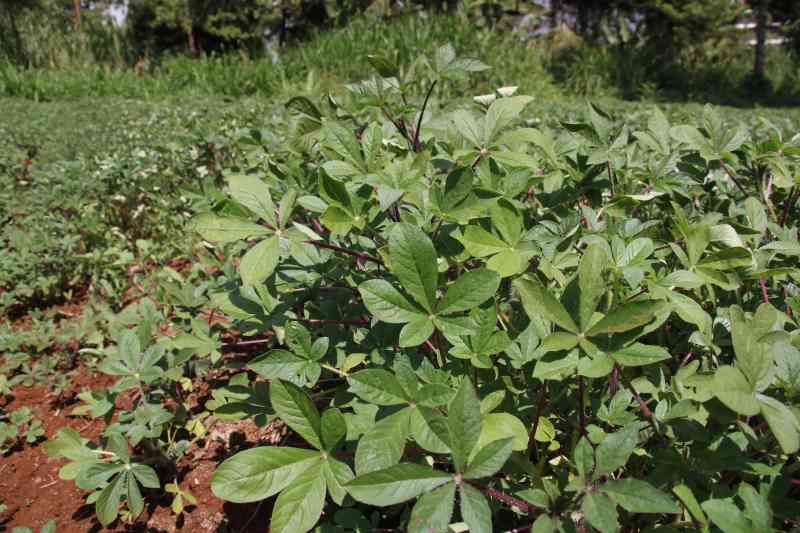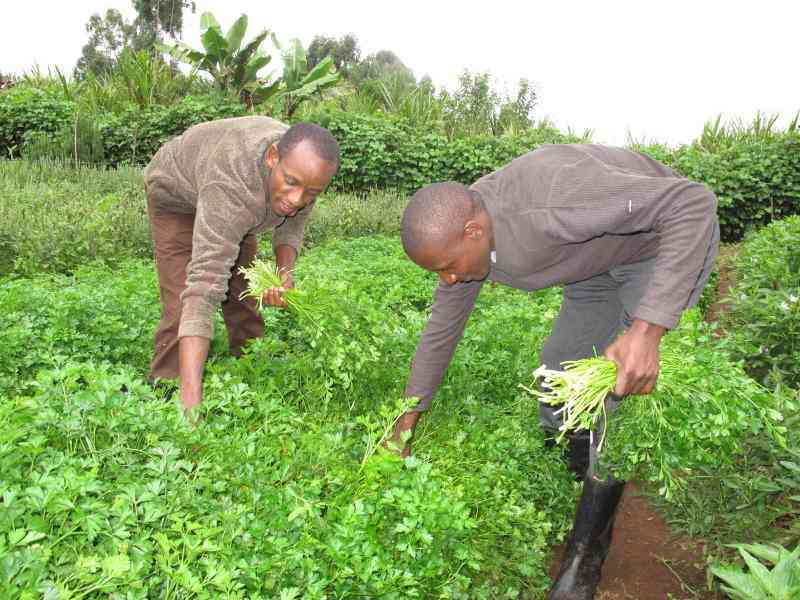How to make nutritious silage
Silage is the material produced by controlled fermentation, under anaerobic conditions, of chopped crop residues or forages with high moisture contents.
Desirable characteristics of material used in silage making: moisture content of 60-70% and pH below 4.2 for wet crops & below 4.8 for wilted silage.
Species of grass used include: Napier grass, sorghum, maize and sugarcane tops.
Advantages of silage are: Helps counter feed shortages during dry seasons and ensures that enough feed is available all year round; hence animals remain in good health. Silage can be made using fresh or wilted material.
How to make silage
The crop should be ready to harvest: The seed of forage sorghum or maize should be soft but not milky when you squeeze it open.
Napier grass needs to be about a meter high. Legumes should have young pods which are not dry.
If it has been raining and the forage is wet, or if the forage seems immature when the seed is very milky then it is best to harvest it and leave it in the sun for a few hours to wilt as too much water in the forage can spoil the silage.
The chopping and bagging area or silage pit must be clean and ready for the forage.
For the materials that are low in nutrients, maize germ may be added to enrich it.
Ensure proper compaction whether pit or bag silage is being made
Seal the silage material and make sure the silo is air tight. Silage is formed through anaerobic fermentation by microorganisms.
Carefully and step by step open a small portion of the silage when need arises for feeding and seal the remaining silage
The common method of silage making are through use of: Trench/Pit silos and Plastic/Bag silos
A trench silo is built underground or semi-underground. A tractor or heavy loads such as a metallic drum full of water are used to compact the material within the silo. The silo is then covered with a plastic sheet, weighed down with soil. This helps maintain anaerobic conditions.
For plastic silos: Harvested fodder is chopped into 1 inch lengths, mixed with molasses diluted in water The mixture is then packed into a polythene tubing. When the tube is filled, both ends are tightly tied. The bag is then placed in an airtight container for the fermentation to occur.
The advantage of plastic silos is that they are low cost and can be moved easily.
The quality of silage obtained, with maximized nutrient preservation, depends on the quality of the fodder used, the ensiling process and use of molasses. For example, Napier grass should be ensiled when 1 meter in length.
Properly ensiled material can store up to one year without losing quality.
Pit silage; The crop should be ready to harvest: The seed of forage sorghum or maize to be soft but not milky when you squeeze it open. Napier grass needs to be about a meter high.
If there are legumes growing between the crop, make sure the legumes have young pods which are not dry.
The chopping and bagging area or silage pit must be clean and ready for the forage. If possible, a big piece of plastic should spread.
Ensure proper compaction whether pit or bag silage is being made. Seal the silage material by ensuring no air can penetrate. Silage is formed through anaerobic fermentation by microorganisms.
Carefully and step by step open a small portion of the silage when need arises for feeding and seal the remaining silage immediately after the removal.
This article has been adapted from the FAO website.
Author: Dr. Paul R. N. Kangethe (BVM, UoN)
Email: [email protected]
Want to get latest farming tips and videos?
Join Us
Share this article on social
 The Standard Group Plc is a multi-media organization
with investments in media platforms spanning newspaper print operations,
television, radio broadcasting, digital and online services. The Standard Group
is recognized as a leading multi-media house in Kenya with a key influence in
matters of national and international interest.
The Standard Group Plc is a multi-media organization
with investments in media platforms spanning newspaper print operations,
television, radio broadcasting, digital and online services. The Standard Group
is recognized as a leading multi-media house in Kenya with a key influence in
matters of national and international interest.
 The Standard Group Plc is a multi-media organization
with investments in media platforms spanning newspaper print operations,
television, radio broadcasting, digital and online services. The Standard Group
is recognized as a leading multi-media house in Kenya with a key influence in
matters of national and international interest.
The Standard Group Plc is a multi-media organization
with investments in media platforms spanning newspaper print operations,
television, radio broadcasting, digital and online services. The Standard Group
is recognized as a leading multi-media house in Kenya with a key influence in
matters of national and international interest.






